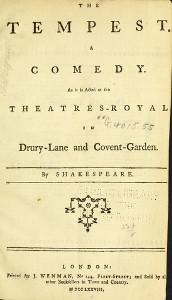

By doing this, I hope to provide a better understanding of the works themselves by way of stylistics, a better understanding of word formation for William Shakespeare, and how the process of word formation affected the works as a whole. The goal here is to understand what differences there are between these connotations and denotations and why, in several contexts, Shakespeare created a word only to have it changed by the context. Additionally, I have looked at the context of these words in the plays themselves and I have noted how the connotation differs from the strict dictionary definition.

I will use the Oxford English Dictionary’s definitions to understand the denotations of each of these created words. The Tempest was chosen as a control for this theory as a late romance, the content of the play does not fit into either of the two designations of tragedy or comedy, and I believe the word choices will primarily remain between the two designations as well. My theory is that plays with significant emotional content will feature a larger number of words that reflect the emotional content within the play. The tragedies, Hamlet and King Lear, were chosen for their high levels of emotional content. After the first scene, which takes place on a ship at sea during a tempest, the rest of the story is set on a remote island, where Prospero, a complex and contradictory character, lives with his daughter Miranda, and his two servants: Caliban, a savage monster figure, and Ariel, an airy spirit. For the bulk of my project, I will be using the Oxford English Dictionary to single out words recorded for the first time in three plays (Hamlet, King Lear, and The Tempest).


 0 kommentar(er)
0 kommentar(er)
